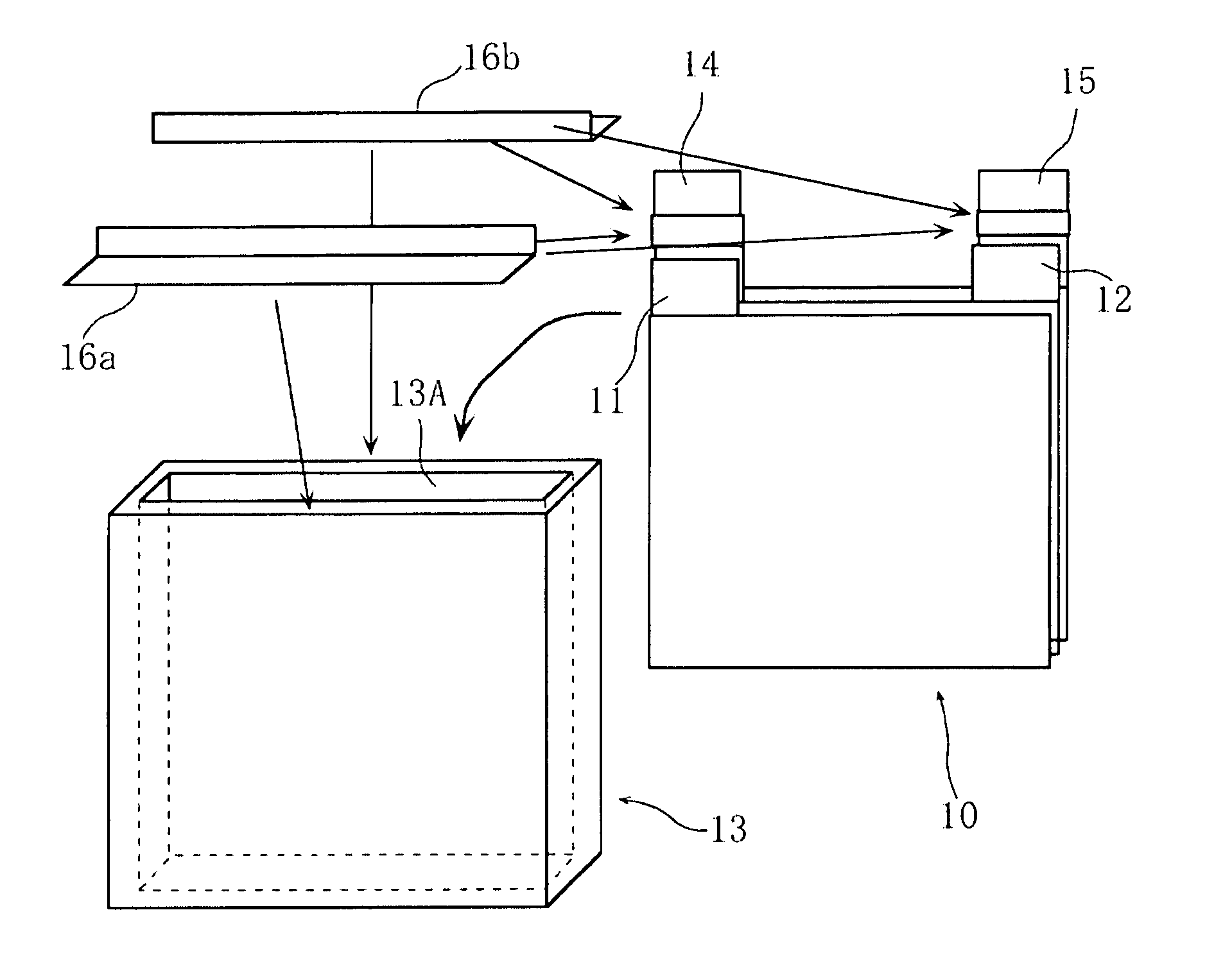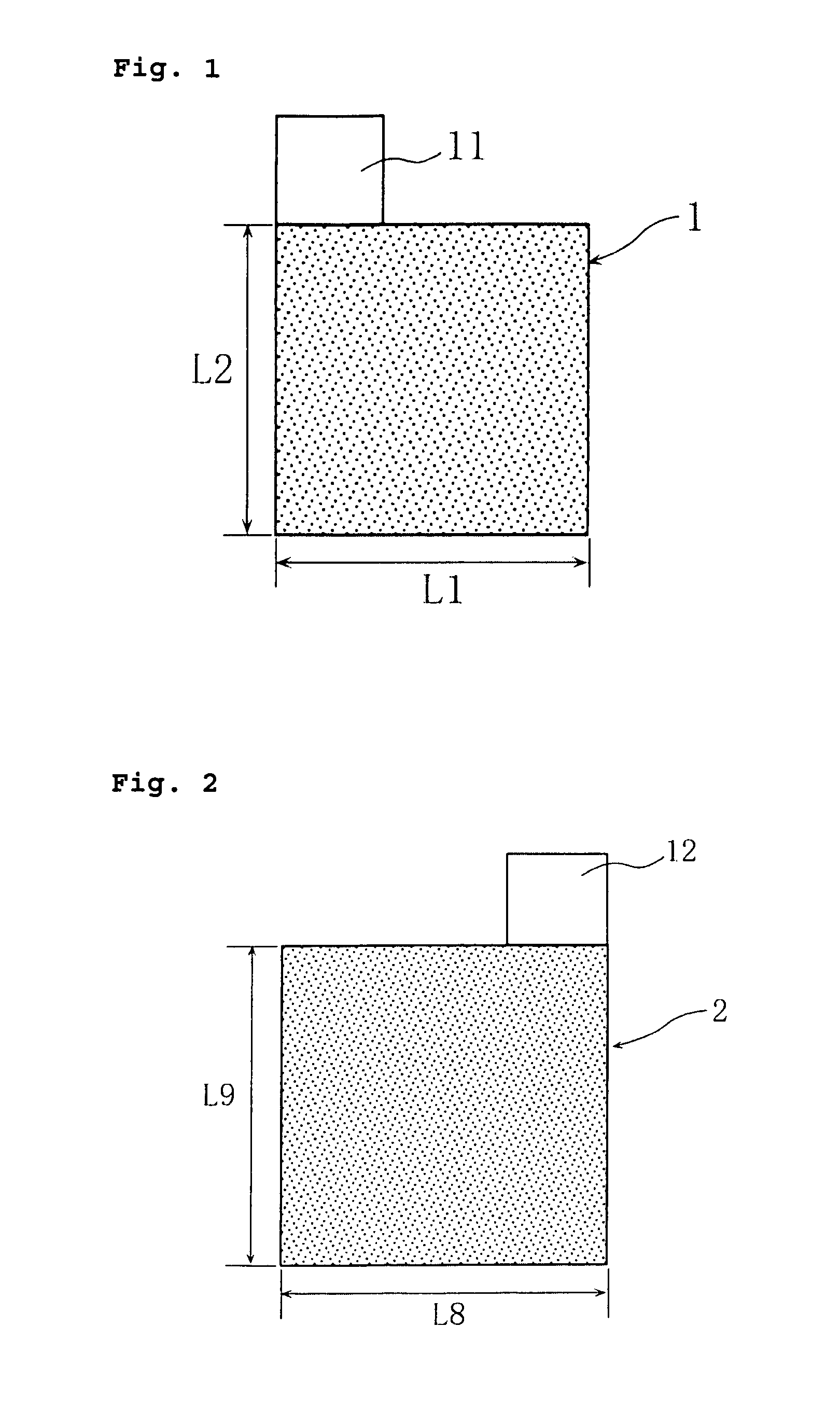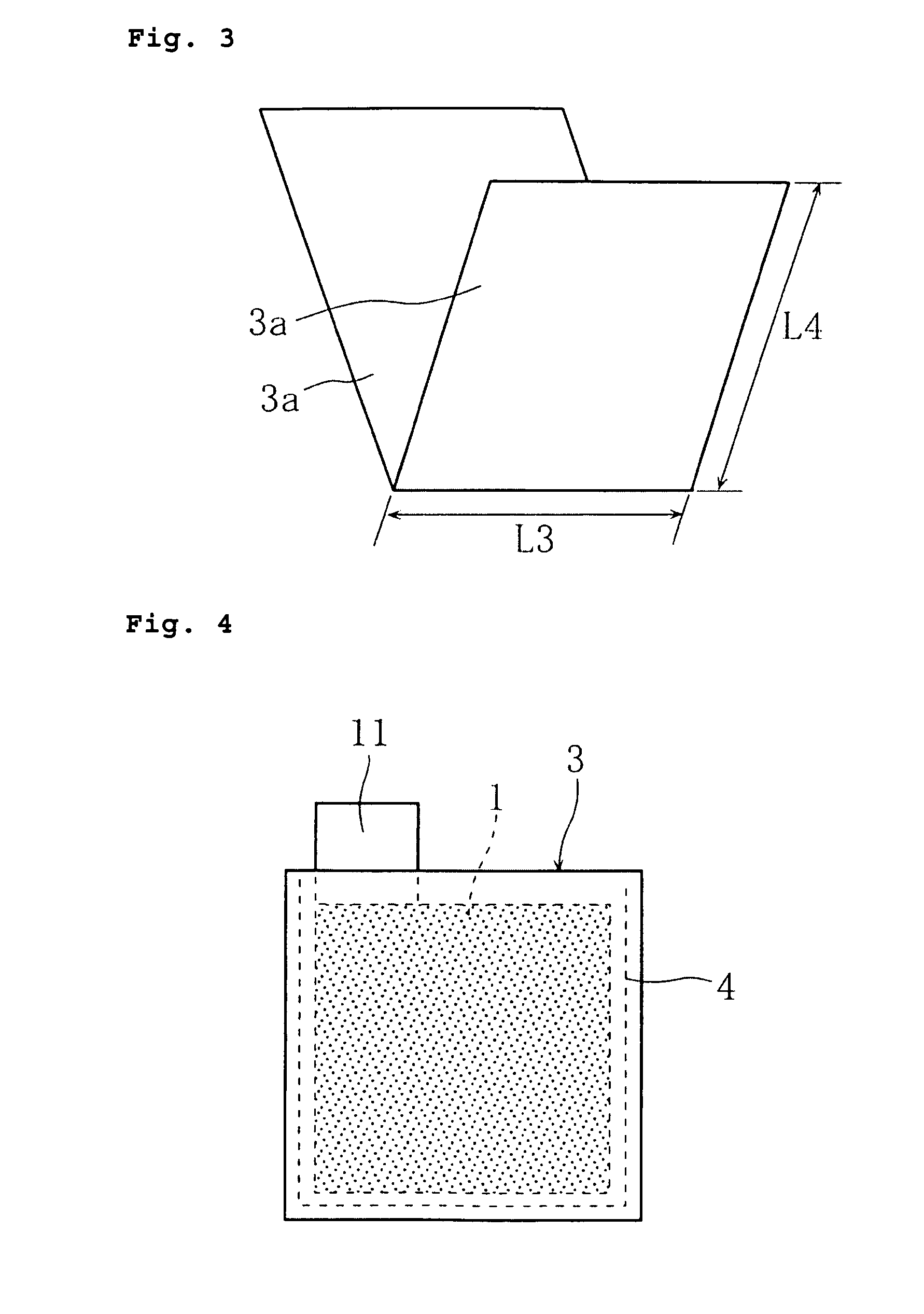Battery and battery module
a battery and module technology, applied in the field of batteries, can solve the problems of reducing the mass energy density of the battery, affecting the performance of the battery, and corresponding increase in the parts count, etc., and achieves the reduction of the parts count of the battery, the reduction of the lightness in the weight of the plastic battery case, and the effect of sufficient hermeticity
- Summary
- Abstract
- Description
- Claims
- Application Information
AI Technical Summary
Benefits of technology
Problems solved by technology
Method used
Image
Examples
embodiments
[0068]Hereinbelow, with reference to the drawings, the present invention is described in further detail based on certain embodiments and examples thereof. It should be construed, however, that the present invention is not limited to the following embodiments and examples, but various changes and modifications are possible without departing from the scope of the invention.
[0069]Preparation of Positive Electrode
[0070]90 mass % of LiCoO2 as a positive electrode active material, 5 mass % of carbon black as a conductive agent, and 5 mass % of polyvinylidene fluoride as a binder agent were mixed with a N-methyl-2-pyrrolidone (NMP) solution as a solvent to prepare a positive electrode mixture slurry. Thereafter, the resultant positive electrode mixture slurry was applied onto both sides of an aluminum foil (thickness: 15 μm) serving as a positive electrode current collector, except for the region to which a positive electrode current collector tab would be welded. Then, the material was dr...
example 1
[0085]A battery fabricated in the same manner as described in the foregoing embodiment was used as the battery of Example 1.
[0086]The battery thus fabricated is hereinafter referred to as a battery A1.
[0087][Charge-discharge Test for the Battery]
[0088]The battery was charged at a constant current of 1.0 It (2.5 A) to 4.2 V, and thereafter discharged at a constant current of 1.0 It (2.5 A) to 2.5 V.
[0089]In the charge-discharge test, the average discharge voltage was 3.7 V, and the discharge capacity was 2.5 Ah.
[0090]Effects of the Battery
[0091]In the battery A1, a power-generating element containing the stacked electrode assembly 10 and the electrolyte solution is disposed in the accommodating space of the battery case 13 made of polypropylene resin. The positive electrode current collector tabs 11 / positive electrode current collector lead 14 and the negative electrode current collector tabs 12 / negative electrode current collector lead 15 connected to the positive electrode 1 and th...
example 2
[0096]A battery module fabricated in the same manner as described in the foregoing embodiment was used as the battery module of Example 2.
[0097]The battery module thus fabricated is hereinafter referred to as a battery module B1.
[0098][Charge-discharge Test for the Battery Module]
[0099]The battery was charged at a constant current of 1.0 It (2.5 A) to 21 V and thereafter discharged at a constant current of 1.0 It (2.5 A) to 12.5 V.
[0100]In the charge-discharge test, the average discharge voltage was 18.5 V, and the discharge capacity was 2.5 Ah.
[0101]Effects of the Battery Module
[0102]The configuration of the battery module B1 is as follows. The battery module case 20 has five accommodating spaces formed therein, and each one of the power-generating elements, which comprises the stacked electrode assembly 10 and the electrolyte solution, is disposed in a respective one of the accommodating spaces. The positive electrode current collector tabs 11 / positive electrode current collector ...
PUM
| Property | Measurement | Unit |
|---|---|---|
| thickness | aaaaa | aaaaa |
| thickness | aaaaa | aaaaa |
| width | aaaaa | aaaaa |
Abstract
Description
Claims
Application Information
 Login to view more
Login to view more - R&D Engineer
- R&D Manager
- IP Professional
- Industry Leading Data Capabilities
- Powerful AI technology
- Patent DNA Extraction
Browse by: Latest US Patents, China's latest patents, Technical Efficacy Thesaurus, Application Domain, Technology Topic.
© 2024 PatSnap. All rights reserved.Legal|Privacy policy|Modern Slavery Act Transparency Statement|Sitemap



